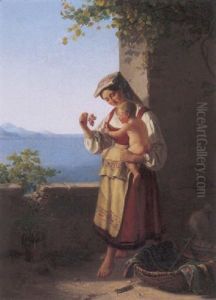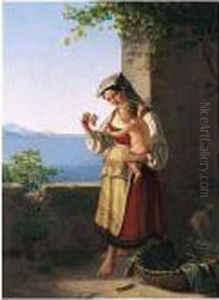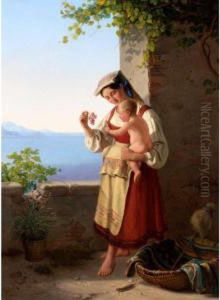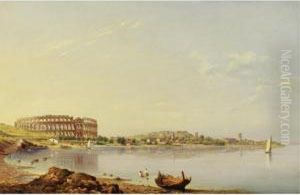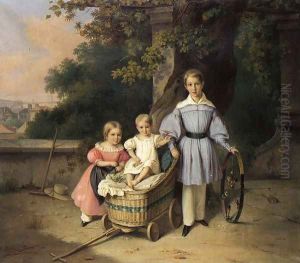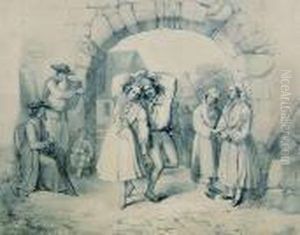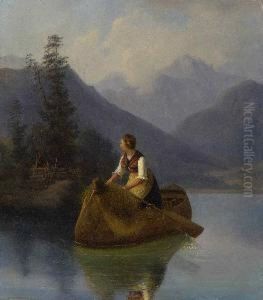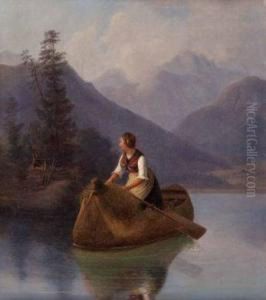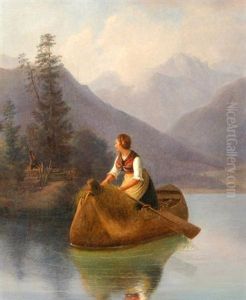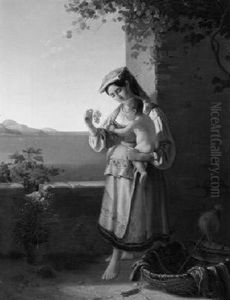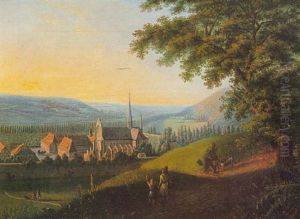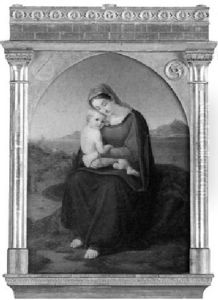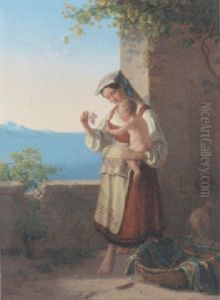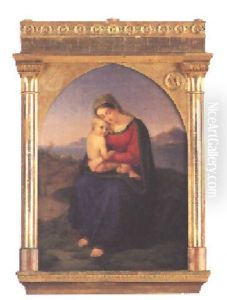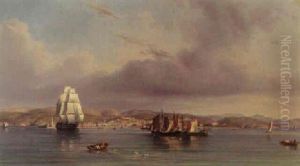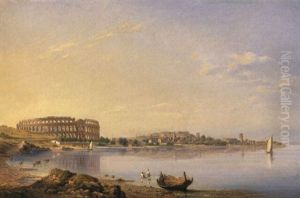August Anton Tischbein Paintings
August Anton Tischbein, part of the prolific Tischbein family of artists, was born in 1730 in Haina, Germany. The Tischbein dynasty is renowned for their significant contribution to the art world, particularly in painting, with several members achieving prominence over the centuries. August Anton was no exception, and his work played a notable role in the European art scene of the 18th century.
Tischbein's early life was steeped in an environment rich with artistic influence, thanks to his family's background. This exposure helped to cultivate his skills and interest in painting from a young age. He trained under the guidance of family members and other established artists of the time, which was a common practice for artists belonging to dynastic families. His education not only included mastering the techniques of painting but also encompassed a broad understanding of the artistic trends that were shaping Europe's cultural landscape.
Throughout his career, Tischbein specialized in portraiture, capturing the likenesses of the European elite with a style that balanced between the late Baroque sensibilities and the emerging Neoclassical ideals. His portraits were celebrated for their elegance, attention to detail, and the ability to capture the personality and stature of his subjects. This acclaim won him prestigious commissions and allowed him to become a part of the intellectual and cultural circles of his time.
Apart from portraiture, Tischbein also engaged in historical and mythological subjects, showcasing his versatility and deep understanding of classical antiquity, which was a significant trend in the art of the period. His works in these genres contributed to the Neoclassical movement, which sought to revive the ideals of ancient Greek and Roman art.
August Anton Tischbein's death in 1804 marked the end of a life dedicated to the pursuit of artistic excellence. His legacy, however, continued through the works he left behind and the influence he had on subsequent generations of artists, both within and beyond the Tischbein family. His contributions to the world of art are remembered as an integral part of the transition between the Baroque and Neoclassical periods, embodying the complexities and refinements of 18th-century European art.
